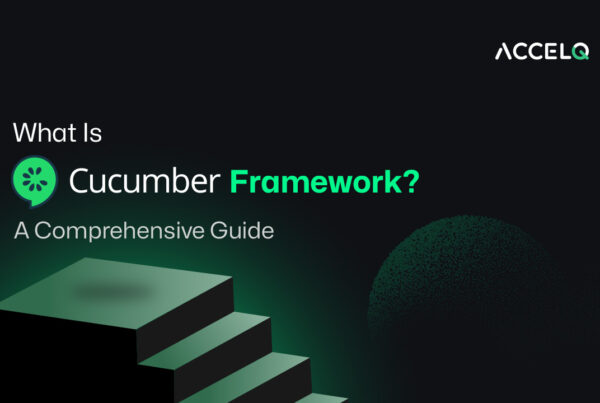
It's natural for the development teams to seek maximum test coverage for their applications to weed out the anomalies, evaluate the testing quality, and cover the unvalidated areas. The question is - how can they extend the test coverage for mobile apps and APIs?
So, let's get started.
What Is Test Coverage?
Simply put, test coverage is the amount of testing completed by a defined set of test cases. Among its primary units, a "coverage item" is a measure (or count) of units that have undergone complete software testing. However, it's noteworthy that end-to-end (or 100%) test coverage does not translate into end-to-end testing.
In essence, it simply collects information on which part of the mobile app or software program is completely tested by the defined test suite. Here is what test coverage achieves:
- Detects application areas (or requirements) not implemented (or tested) by test cases
- Creates additional test cases that can improve coverage
- Identifies and eliminates test cases that do not improve the coverage
- Quantifies the code coverage in testing, which is an indirect mode of measuring software quality
Importance of Test Coverage for Mobile Apps and APIs
As mobile apps gain more market acceptance, businesses need innovative means of achieving test coverage. As a crucial metric, it enables mobile app developers and QA teams to measure the level of completed app testing.
Why is it important? Inadequate test coverage can potentially leave critical bugs in the production stage of the mobile app development process. To prevent this, mobile and web development teams must look at innovative ways to maximize their coverage.
Apart from effective mobile app testing, end-to-end API testing is also critical for improving test coverage. Along with browser tests, API testing improves third-party integration using popular DevOps tools like Jenkins, Postman, and more.
Benefits of Extending Test Coverage for Mobile and API Testing
Test coverage effectively improves the overall quality of mobile and API testing. It can qualitatively measure the portions of application code fully tested before a market release.
With an extended test coverage, product teams can control the testing process’s scope, time, and efficiency. This prevents any cost escalation. In addition, through the shift-left testing approach, product companies can leverage test coverage techniques to detect product defects from the earliest stages of the app development process.
With extended test coverage, mobile app developers can track all the decision paths used by app users. As They test gaps in test cases, requirements, and application code. This, in turn, can improve the efficiency of application testing. Also, extended test coverage can eliminate redundant tests and optimize the test cycle.
How Is Test Coverage Different from Code Coverage?
Among the common misconceptions, people often confuse these two terms.. Both these testing techniques can measure the quality of any software code, hence the confusion.
Typically performed by app developers, code coverage involves practices that target every piece of written code. On the other hand, the QA or testing team are responsible for implementing test coverage. It involves developing a complete plan to test every requirement.
Here are some of the major differences between test and code coverage:
- Scope: Code coverage is primarily a form of “white box” testing technique used to verify the executed code. Test coverage is a “black box” testing technique used to monitor the execution of test cases.
- Execution Level: Typically, code coverage executes at the level of unit testing. App developers create the test cases for code coverage. They can determine the test cases to execute. On the other hand, test coverage involves different types of testing. For example, to test web apps, UI/UX testing is preferred over functional testing.
- Objective: The objective of code coverage is to enable development teams to monitor the progress of their test cases. On the contrary, test coverage aims to provide details about which written application code is tested successfully.
- Levels: Code coverage has multiple sub-levels, like branch coverage, function coverage, and statement coverage. Test coverage does not have any sub-levels. However, it has multiple types, such as features, risks, and requirements coverage.
In the next section, we shall discuss how test automation can extend test coverage for mobile and API testing.
Improving Test Coverage with Automation Testing
Test automation tools and frameworks enable QA teams to execute parallel tests on both mobile apps and APIs. To improve the coverage, automation testing must cover maximum lines of application code. This involves the following strategies:
- Scale test coverage across various mobile devices and environments
- Leverage parallel testing to accelerate automation testing, thus improving its ROI
- Execute automation testing for visual testing
To maximize the outcomes, QA teams must design an effective test strategy with information about:
- Mobile devices
- Operating systems (OS)
- Multiple OS versions
To scale up their mobile and web app testing, organizations can leverage the capabilities of a cloud-based test automation platform that provides the necessary testing infrastructure. Test automation platforms are cost-effective as organizations do not need to invest in mobile devices and infrastructure. They also enable QA teams to perform both manual and automated testing across multiple devices and platforms.
Product teams can improve their test coverage across applications by automating both mobile and API testing,. Furthermore, this can free up the QA team to focus on higher-level testing initiatives. Automation testing also supports the "Shift Left" approach, thus enabling the detection and resolution of app bugs in the early phases of application development.
How Test Automation with ACCELQ Improves Test Coverage
With its cloud-powered codeless test automation platform, ACCELQ can efficiently extend test coverage for both mobile and API testing. Our test automation platform improves productivity by 3x and lowers costs by 70%. Using ACCELQ Connect, QA teams can retrieve information about test coverage from the ACCELQ platform.
Our team of QA consultants can help you improve your testing outcomes in your mobile app development environment. Get in touch today!
Related Posts
 What is BDD? A Beginner’s Guide
What is BDD? A Beginner’s Guide
What is BDD? A Beginner’s Guide
 Cucumber Testing Framework: A Comprehensive Guide
Cucumber Testing Framework: A Comprehensive Guide



































